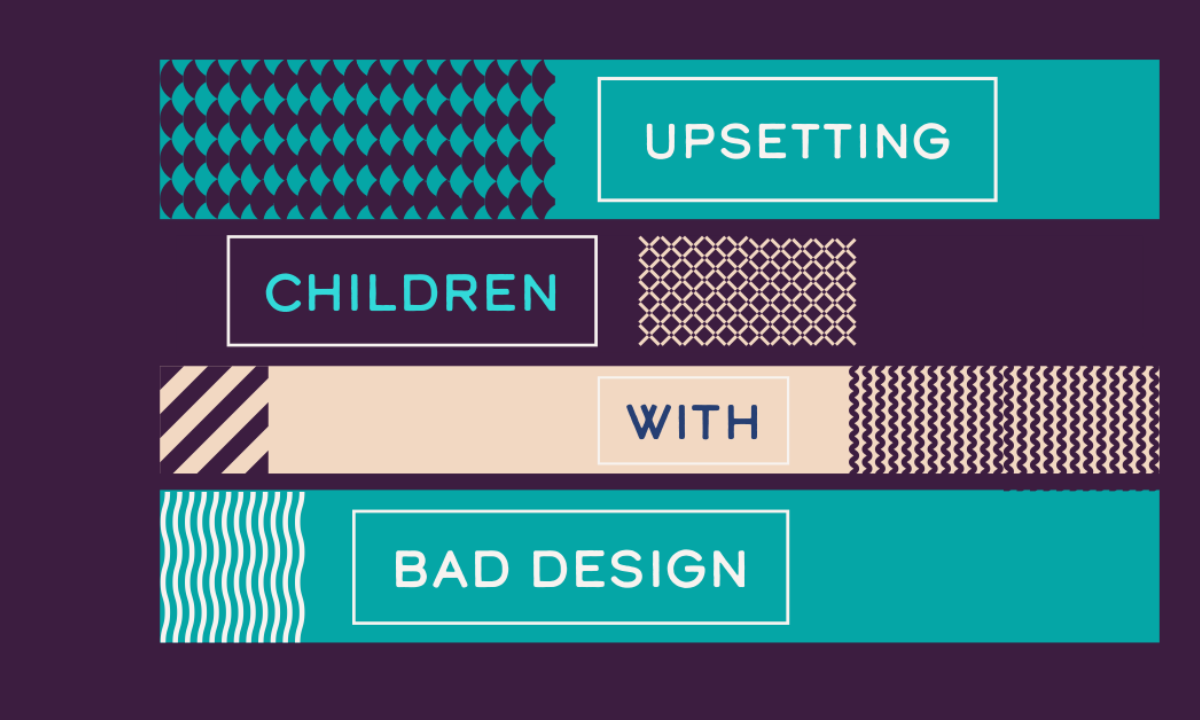Upsetting little children with Bad Design
Topics


Let's be real for a minute. What do little children really ask for? A little food, some entertainment and cuddles. How hard can it be to design for children?
Not hard at all - but only if you pay attention to the process of design, which not many regional businesses do.
Over the weekend we took our 3-year-old to the mall to shop for a few things and were pleased to find ourselves a fairly large pop-up play area as part of Dubai Summer Surprises.
The offer was good too! Spend a certain amount and your kid gets an entry to this wonderland containing a massive sandpit, a ball pit, some arts & crafts activities & water zone, you name it. We have a plan! Pick up a few things to meet the requirement, send the kid to the play zone, continue shopping and probably even have lunch. Amazing!
Nope. Not quite.
Bad Design #1: Lacking Empathy.
Empathy /ˈɛmpəθi/ noun: The ability to understand and share the feelings of another.
One crucial aspect of the Design Thinking process involves developing empathy towards the end-human you're designing for. To truly understand what drives them, triggers them to behave, feel, think & act the way they do when interacting with products or in this case a Service.
The play area was broken down into 4 different 'Gated' zones. Here comes the first hurdle. Have you ever tried explaining the concept of queuing to a toddler?

Parents had to stand in queues of over 40 people - 20 big humans and 20 little humans to reach the gate where normally the children would be given access to this magical space. Nope. Instead, we were given a sticker denoting the time the child would enter (15 minutes from then). Now you have to turn your little one away from a place they've set their eyes on. Of course like any normal child would - they started crying.
So now, you've got around 12 parents outside the sandpit trying to console their sobbing minions in a public space with 3 cafes around us. Not only upsetting the parents but other mall visitors; some of whom are conducting meetings at the cafes.
Bad Design #2: No Rapid Prototyping on Implementing User Feedback.
Realistically - It would be very hard to create a simple prototype of a play area.
But that shouldn't stop a business from learning. For instance - The management of the mall were noticeably aware how this was disrupting what could've been a great day at the mall for all the stakeholders involved - the kids, their parents, customers of the coffee shops & other mall visitors.
The management could have - at their own discretion - Observed the commotion, Learned from it & then Revised either the Design of the space or the Service.

When using the term 'User Feedback' a lot of businesses misconstrue it with 'The written word of the customer sent written on a scroll and sent with a raven'. That is just plain crazy!
You can derive feedback from user actions, behaviours and emotions as well. All it really needs is observation - Another core aspect of Human-Centered Design.
Bad Design #3: Business metrics before Emotional metrics.
We all understand that in order to succeed a business needs to have higher sales than it does expenses. But at what cost?
Each one of these 4 zones was playable for just 15 minutes!
Think about this: 15 minutes of queuing, 10 minutes of waiting, 15 Minutes playtime, Repeat.
You get the point.
Each one of these children was put through pain (For them at least) just so that the business could maximize the number of shoppers & vouchers.
All parent's know that the attention span of an infant is 15-20 minutes - What could've been done was to allow children in with 1-hour limits where they could then freely explore each of the 4 zones as they pleased. Achieving the same expected result naturally instead of being forced.
Of course, this doesn't mean the business should ignore the KPI's put into place, what this means is that Emotional Metrics & KPIs need to be created and measured alongside Business requirements. Stakeholders & Business Analysts should spend time considering the sentimental effects of any service/product and create specific KPIs that track & monitor the developments.
To sum it all up. Regardless of how much you have spent creating & designing a product or service - It will never have a large-scale impact if you don't consider the Humans you're Designing for.
For one, My wife & I are certainly never going to visit that space again, nor do I think other parents who experienced this alongside us will.
Your loss 'Yet another big mall in Dubai'.


